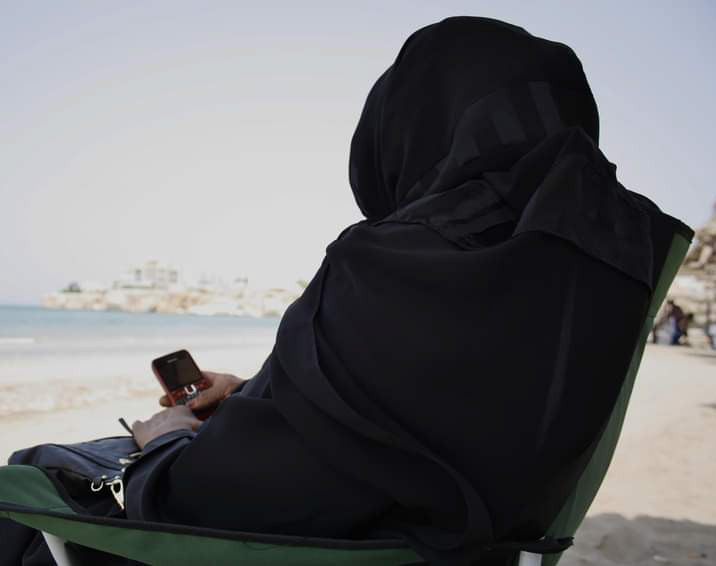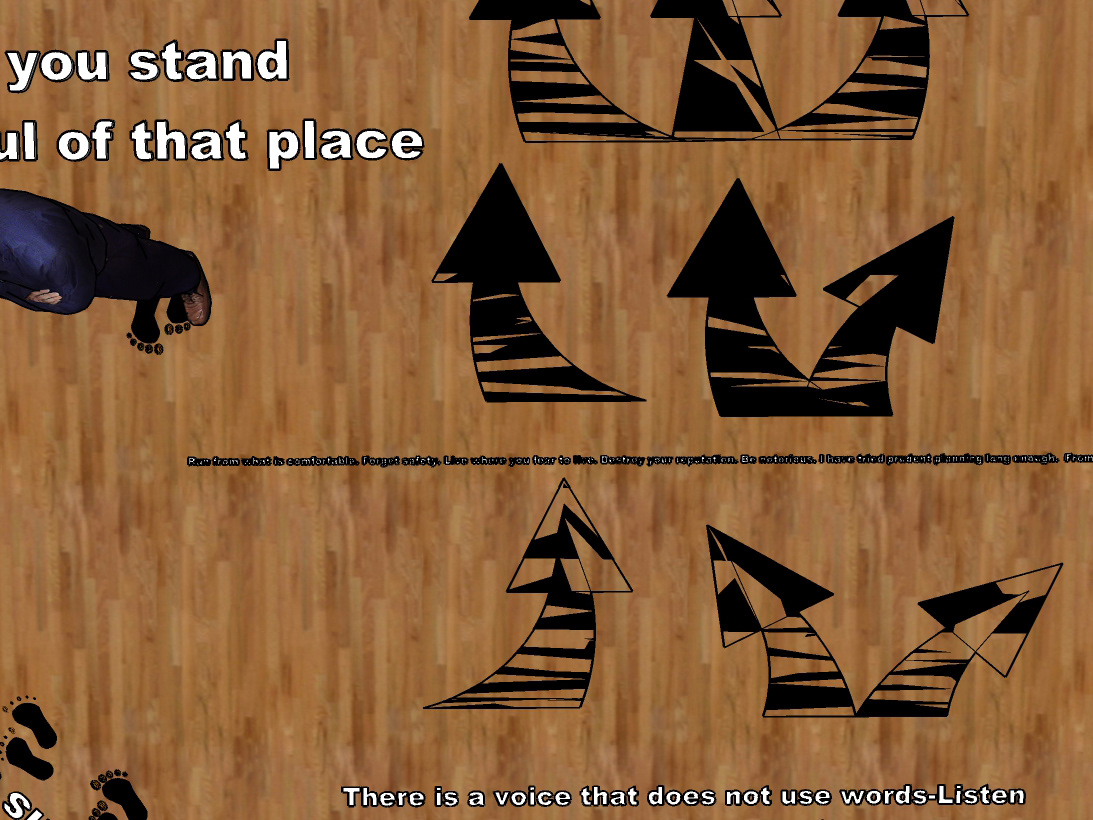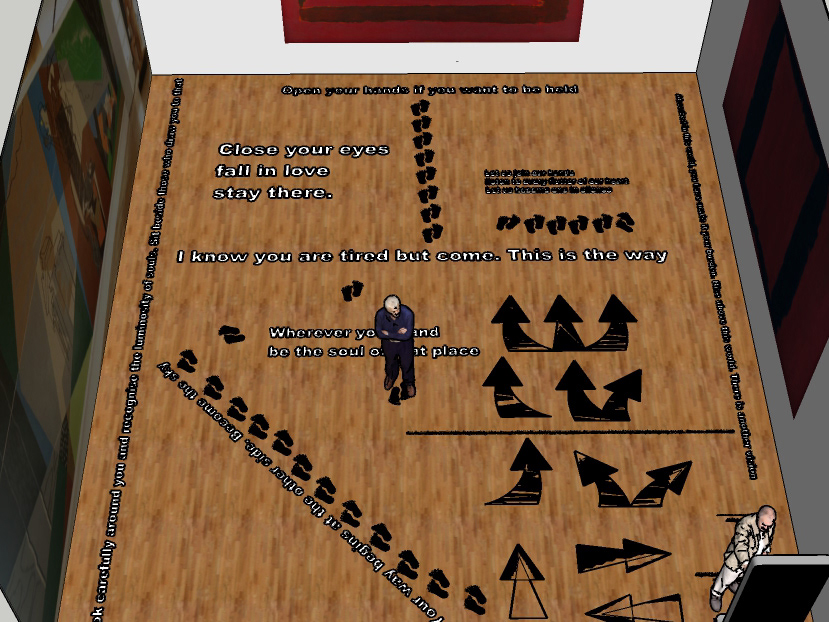Listen to Your Heart, Not to the Crowd
“THE CROWD, suddenly there where there was nothing before, is a mysterious and universal phenomenon. A few people may have been standing together-five, ten or twelve, not more; nothing has been announced, nothing is expected. Suddenly everywhere is black with people and more come streaming from all sides as though streets had only one direction. Most of them do not know what has happened and, if questioned, have no answer; but they hurry to be there where most other people are. There is a determination in their movement which is quite different from the expression of ordinary curiosity. It seems as though the movement of some of them transmits itself to the others. But that is not all; they have a goal which is there before they can find words for it. This goal is the blackest spot where most people are gathered”.
Elias Canetti
This project (Listen to Your Heart, Not the Crowd) has its roots in the spiritual reflection and agency of the artist, the viewer and by extension the art institutions of museums and galleries. Traditional museums and galleries have been inviting the viewer to their collections and exhibition displays without encouraging any specific visible responses and despite that, it is psychologically understood that all human experiences have an emotional dimension that leads to a movement (a response).
At this point, I would like to go back to the year 2011 and a personal epiphany I had whilst visiting the Museum of Contemporary art in the city of Bonn in Germany. It was the first time that I came face to face with the actual work of Joseph Beuys and its power was immediate. I have been mystified by western art for years due to its lack of connection to my eastern culture and tradition but now, I found some connection in the art of Joseph Beuys and that connection was not aesthetical but rather spiritual. It was not what the art looked like, but how the art made you feel. Art that can do that is indeed art that has an immense capacity for spectatorship. The entire experience did not feel like visiting an art gallery or a museum, it felt like visiting a place of worship. I felt like I was in a temple of art. The artist divine, the space sacred and I was on an artistic pilgrimage. It remains to be one of my most treasured memories. But why? Why was I impacted in that way? To try and find some answers to that question, we must consider all the factors that came together to create that experience. First, the artist and the art, secondly the art institution and in this case, The Museum of Contemporary Art in Bonn and lastly the audience (The viewer, the pilgrim) me.
Joseph Beuys- The Social Sculpture
'In matters of seeing, Joseph Beuys was the great prophet of the second half of our century. Believing that everybody is potentially an artist, he took objects and arranged them in such a way that they beg the spectator to collaborate with them ... by listening to what their eyes tell them and remembering.' John Berger, The Shape of a Pocket.
A 2016 article in the Guardian grabs my attention in its attempt to unearth the mysteries surrounding Joseph Beuys's life and participation in Germany’s Nazi era, it said of Beuys's rescue fable after having been involved in a near fatal military plane crash: ' It may be that he was deliberately evading responsibility for his part in Germany’s programme of total war, though it’s also possible that he was, like many artists, simply engaging in an act of bombastic self‑creation. All the same, by turning his injury into a fable, Beuys did make a clear statement of intent. War, fascism, nationhood, trauma and repair: these would be his subjects, but his approach would not be that of a historian or social scientist. What he was interested in was discovering and communicating in mythic terms how damage might be transfigured or transformed. Myth had been poisoned by the Nazis, and now he would undertake a grand project of reclamation and decontamination, conducted in a purely psychic realm.'
This desire by Beuys to conduct in a purely psychic realm is what I felt open physical encounter with his work in Bonn and that is why I feel that Beuys was able to achieve his aim and I personally consider him to have succeeded because here I am, a non-westerner, with no connection prior knowledge of intention of the artist, I was able to find connection with the performative agency of his work despite the ambiguity of its aesthetic value. The work transcended the physical realm and performed a further function in an invisible realm, Beuys referred to it as psychic and I refer to it as spiritual but essentially, it's transcendence beyond the seen, its ability to memorialise and make us remember is it's fundamental function and that's when art can become a social sculpture. It can be a performative monument concerned with the present and the future, a monument concerned with care, repair, taking responsibility and transformation starting from the core of what it is to be human; to reflect, to feel, to recall, to be present, to change and to be counted.
* I would like to pause here and point out that my project is a conceptual project that if realised is intended to find home in two art institutions, The Tate Gallery in London and Ca Pesaro for Contemporary Art in Venice and since it has been impossible to visit either of these due to the ongoing Corona Virus Pandemic, I have decided that I still wanted to reflect on the role of the art institution in the experience of the audience and since I chose Jospeh Beuys as my example of the successful artist who was able to deliver a transcending experience of art to the audience (me) It only makes sense to round this by introducing the institution where this experience took place and that is the Kunstmuseum Bonn.
Bonn's Museum of Contemporary Art or Kunstmuseum Bonn
'As a Museum focusing on the development of German art before the backdrop perspective of international exhibition programs, all of our endeavours aim at defining the Kunstmuseum Bonn as a location where, on a regional, national, and international level, important artistic issues and positions are highlighted, reflected upon, and with respect to future developments, anticipated as well so that this Museum is firmly established in the public consciousness as one of the major museums and exhibition locations in the Federal Republic of Germany.' Kunstmuseum Bonn Website
Founded in 1947, the Kunstmuseum is part of Bonn's museum mile, exhibiting both temporary exhibitions and its collection. The Kunstmuseum permeant collection focuses on the Rhenish Expressionism (the largest in the world), post-war German art and selected international artists. The German artists included in these collections include, Georg Baselitz, August Macke, Anselm kiefer, Jospeh Beuys and Blinky Palermo. The museum integrates some of the non-German artists in its collection such as Richard Long with Palermo and Lucio Fantana with Beuys and I think that this if not obviously playing a didactic role, it adds a dimension to the audience experience of the collection that I have not felt elsewhere.
The building itself opened in 1992, and was created by the BJSS firm (Axel Schultes) and Jürgen Pleuser costing a 100 million DM. It has three main entrances with each symbolising openness. The space houses a central staircase travelling between the floors of the galleries and was designed to function as in a "precise geometry, cut like jewellery. The conception of light brings the collection to life." The total exhibition area is around 4,000 square metres (43,000 sq. ft).
This purposefulness of design offers both the curatorial team scope for new ways of experimentation in display and the audience a journey that is more akin to reading a very stimulating book or an assembling of a puzzle, you are essentially following invisible instructions in the way you wish to experience the space and the collections. There the usual signs posted identifying the different gallery rooms, very subtle signage but the whole experience feels like gliding through time and space. It felt spiritual and uplifting.
The Audience
I want to reflect on this by placing myself in the shoes of the audience. My main purpose for visiting the Kunstmuseum Bonn was to learn about German Art but I found much more than that, I learnt about history, society and felt so many emotions which have stayed with me until now. I belief that an art institution needs to deliver to its audience a living experience and it can only do that by ensuring that what is displayed or how it is displayed factors in the performativity of the art and the audience alike.
Although Beuys himself is no longer with us, his works performative agency made me feel as though the artist was just there in the room, engaged in a performance or me as the audience, I am invited to performativity and a negotiating with his work. elements of movement and performance. The only other experience that I can think of that was near to my experience at Bonn, is that whenever I visit the Rothko room at the Tate in London. However, in a traditional static display, it is only the strength of the artwork that can explain these transcendent experiences but what about the role of the curator and the institution in actively creating and promoting these experiences throughout the museum/gallery? It raises some questions in my mind about who these traditional art institutions are for and what function do they have in view of civic duty and social cohesion in our contemporary society? It also raises questions about how does a wider audience view these art institutions considering the social shifts that have been taking place for a good number of decades? Can we say that the new art institution needs to feel less clinical, that it should affords fluidity of emotion and movement?! I have created this project to put these observations to the test.
When we consider certain shifts in art making post world war II, we notice an increase in performative and performance-based art within the space of gallery and museum and a changing of the civic duty of the art institution. This shift has brought more community engagement with these institutions and with it an increased focus on the creative rights of all people from all walks of life but has that become the format of today's art institution? I would have to say no because most museums and galleries require the audience to be a passive viewer very much like the traditional monument. just like counter monuments give a new interpretation of what a monument might look like today, audience engagement and participation is key to the museum/ art gallery of now and beyond.
In researching the changing scope of art, it is function and value, it came to my attention that the performative role of the audience is not a new concept, the viewer has always been performing in response to the art displayed before them and as insignificant as these responses might seem to the naked eye, they are the agents of the living museum experience. The audience itself has played a big role in the changing nature of the art institution, moving away from being seen as inclusive spaces to a more inclusive public space, with the audience becoming an increasingly visible element in the realisation of an artwork. The audience experience cannot be seen as merely passive anymore, it is an integral part of the reason why some people go to art galleries and museums. As well as being an artist who makes art, I am also part of the audience group and I go to galleries and museums to enjoy the art but also for these emotional and mental triggers that cause me to move. These movements start on the gallery floor and continue outside, they create ripples far beyond the museum/gallery space and that is what I want to bring attention that.
In conclusion, I want to create work that encourages the audience to move with purpose, to move after reflection, to move for social change and move with emotion and rhythm.
* A still image of my concept for both Tate London and Ca Pesaro. The work is essentially text, foot marks and arrows printed on vinyl and then laid out onto the gallery floor. A digital screen is placed at a visible point in the space with instructions prompting the viewer to share their experiences of navigating/ performing/ movement through the space- How did the instructions to move though the space change their experience?!
Some of the questions and concepts I attemot to explore through this project are:
1. Bringing attention to boundaries of subjectivity.
2. Encouraging the audience to self-reflect- by invitation through performative action.
3. Drawing audience attention towards shared spatial experiences with the ‘Other’ that are not forced but rather self-directed through willingness to participate in the performative nature of the work laid out on the ground before them.
4. Understanding about crowd behaviour in a museum setting post-colonialism.
5. The importance of digital technology and its monumental and performative properties in a public museum or gallery setting.
6. To understand how art institutions such as museums might conceive a ’postcolonial museum’ in the contemporary world of mass migrations, the internet and digital technologies and how increasing ways of appropriating audience performative experiences into museum/gallery visits facilitates this idea of a ‘post-colonial museum.
7. To consider the new audience centric museum experience as one that at its heart a transformation of museums as cultural spaces, rather than physical places.
8. To examine how audiences interact with a living museum space formed through creation, participation, production and innovation.
Sources:
1. Wikipedia.org
2. Elias Canetti, Crowds and Power 1960
3. https://www.theguardian.com/artanddesign/2016/jan/30/fat-felt-fall-earth-making-and-myths-joseph-beuys
4. Staging Meaning: Performance in the Modern Museum. Valerie Casey
5. The Performative Power by Tanja Schult
6. https://www.kunstmuseum-bonn.de/en/information/museum/
7. Mural by Gino Severini- On one side of the wall in the SketchUp animation. https://capesaro.visitmuve.it/en/il-museo/percorsi-e-collezioni/chiara-and-francesco-carraro-collection/
8. Mark Rothko Seagram paintings. On the other wall in the SketchUp animation. https://www.tate.org.uk/whats-on/tate-modern/exhibition/rothko/rothko-room-guide/room-3-seagram-murals


